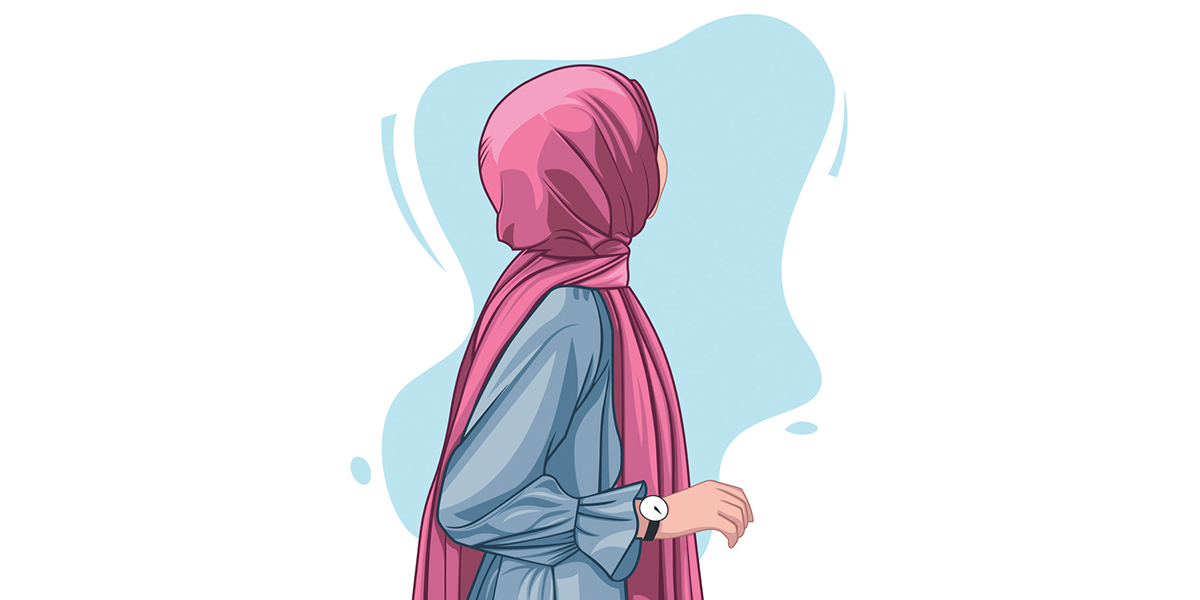Turkish hijab, abaya designs gaining popularity in Pakistan

LAHORE: The latest designs of Turkish ‘abayas’ (veil) and ‘hijabs’ (scarf) are gaining popularity in Pakistan.
The abaya looks like a jacket or a formal coat and the hijab covers the head — both forms of coverings are associated with Muslim women.
On World Hijab Day that falls on Feb 1, the Karachi-based abaya and hijab designer Nida Imran launched her latest collection of Turkish designs.
“Most of my customers are young girls who are school-, college- and office-going. They are now preferring the Turkish-style abaya and hijab as they find it more comfortable and easier to carry”, the 34-year-old designer told Anadolu Agency.
Due to the rising demands and the latest trends, the designer has to launch a new collection every few months, she said.
“In Pakistan, due to the weather conditions, we have to launch a new collection after four to five months. And, as the wedding season starts in winter, we receive lots of orders for the festive collection. In that collection we create fancy abayas with their matching hijab, again taking inspiration from the Turkish styles”, she apprised.
Hijab trends
According to research by Pulse Consultant, a private marketing firm, the hijab trend has nearly tripled among young urban females ranging from the ages of 16 to 28 in Pakistan.
Ten years of research shows that nine per cent of young urban girls preferred wearing hijab outdoors in 2008, while the figure soared to 25pc in 2018. The report with regard to the comparative study was released in 2019.
“The study was conducted in 14 top cities of the country and the latest data is also being compiled which will be released in the coming months. The data shows that the numbers have increased more than double again”, Pulse Consultant CEO Kashif Hafeez informed.
Sustainable fashion with budget
By carrying hijabs and abayas the women are choosing sustainable fashion which also proves budget-friendly. “One casual abaya with hijab starts from Rs2,000, while the festive collection goes to a maximum of Rs8,000 to Rs9,000. The women wear the casual abaya around eight to nine hours daily and the fancy abaya for around four to five hours, depending on the functions they attend”, said Nida Imran.
With various trends in different Muslim countries, the options and styles have expanded from the basics. “Just four to five years back, we only used to make abayas and hijabs in the black colour, but now after the Turkish and the Malaysian trends, we have launched a range of colours as those style of hijabs look better in different colours while the black colour absorbs more heat than other colours. And this is the reason why people are now preferring the white or the light colour hijabs”, she claimed.
The Pulse Consultant data has revealed that almost 40pc of young Pakistani females from the urban areas prefer to carry the chador, a big piece of cloth to cover themselves, while they go outdoors.
“The trend of hijab has come to the subcontinent from the Middle East and Arab countries. The chador or the ‘dupatta’ was the tradition of the subcontinent but with globalization, the trend has come to our country and is easier to carry outdoors”, said Hafeez.
Saba Warraich, 25, who wears the abaya and hijab, says that besides providing inner satisfaction, they are very easy to carry.
“I started wearing the abaya in college. Before that, I only used to take the hijab. Even on outdoor projects and shootings I have always felt secured in my attire”, she said. — Courtesy Anadolu Agency
Read More News On
Catch all the Business News, Breaking News Event and Latest News Updates on The BOL News
Download The BOL News App to get the Daily News Update & Live News.